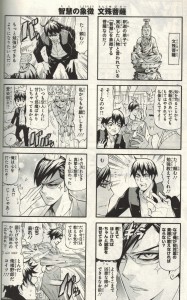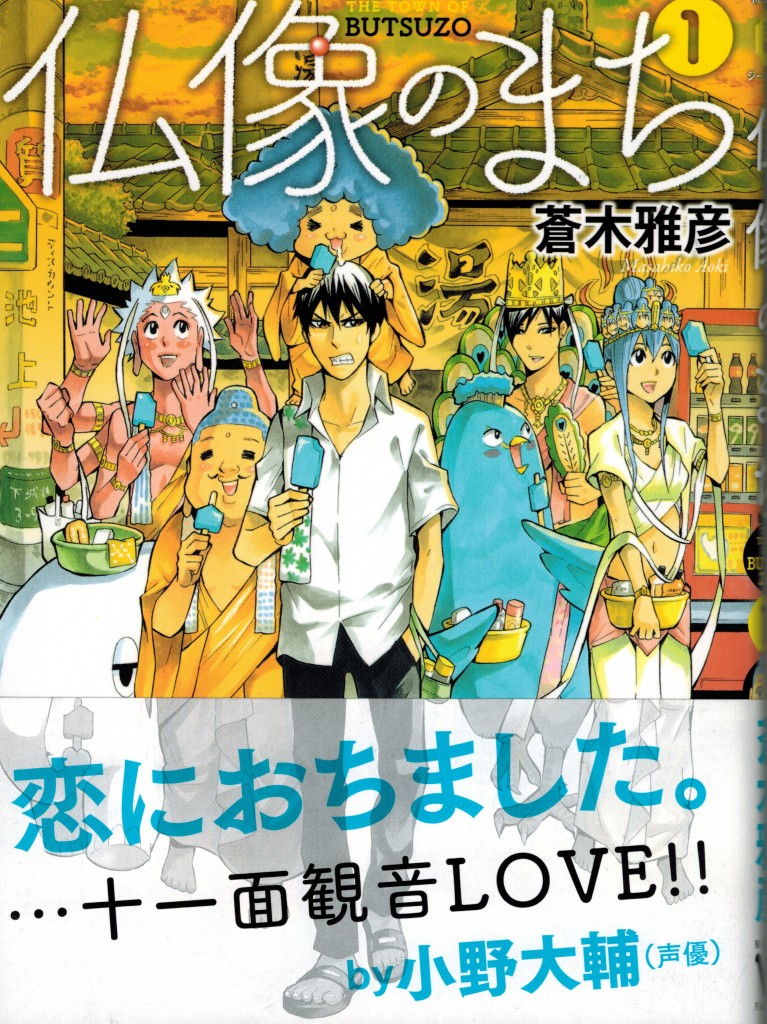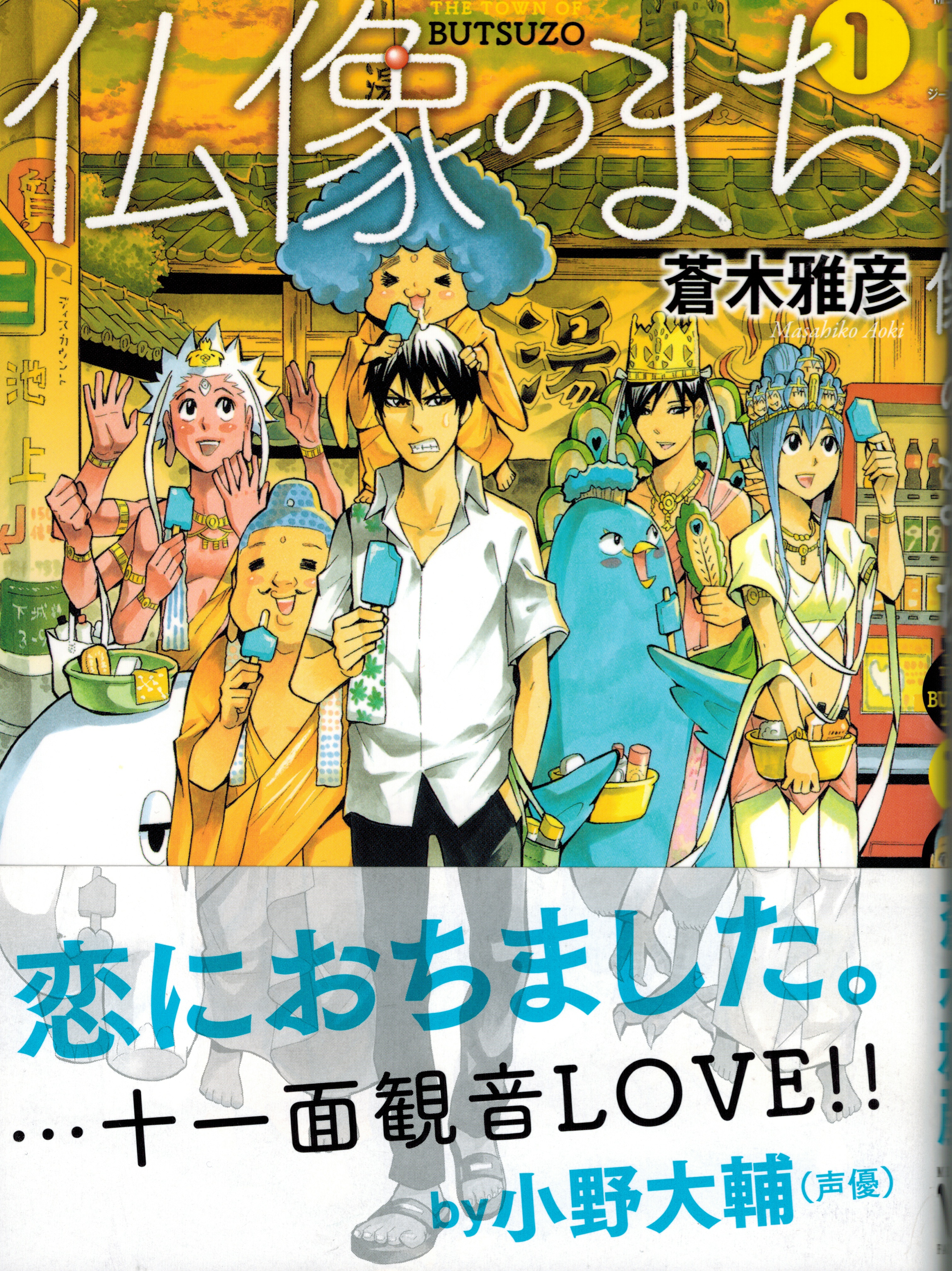仏像のまち(The Town Of Butsuzo) which began publishing this July is one of the more unusual comic (manga) to debut in the last year. It’s the story of Sorato, a high school student who’s deceased father was a sculptor of Buddhist images (仏師/busshi) and seems to have passed his unusual talent on to poor Sorato-kun. Sorato has the ability to communicate with the Buddhist deities and Bodhisattvas residing inside the statues. One evening as he is staying up late studying for a high school exam, he calls on the spirits for help–and faster than you can say “Holy Buddha”–Shakyamuni (the original buddha) himself shows up at his window to offer a helping hand. Unfortunately for Sorat0, the Buddha turns out to be an awful tutor and a terrible distraction. One by one the local Buddhas began showing up at his house, intervening in his love life, his studies, and taking away his valuable examination cram time.
The Town of Butsuzo is primarily a four panel gag comic series but carefully and with lots of furigana (the reading of the kanji) teaches the reader about Buddhist iconography, metaphysics, the pantheon of Gods, ethics, and the discomforts of Japanese teenage life. The humor is relatively high-brow and surreal. Some of the best vignettes are ones like Sorato taking the Buddhist gods bowling or on a disastrous trip to Don Quixote, everyone’s favorite sprawling discount store chain. The author manages to keep the story firmly grounded in the real world. The Buddha that gets the harshest treatment is Monju Bosatsu (文殊菩薩)–who is the embodiment of wisdom and thus the patron saint of all students going through examination hell. In the world of Sorato-kun, Monju is an arrogant straight A student (優等生/yutosei) who lords his infinite knowledge over everyone else. He steadfastly refuses to teach the hero anything.

In one scene Sorato is holding a math textbook in his hand and moans, “I just can’t figure out the problem!”. Monju pipes up, “Let me take a look at that.” He flips through the text nodding, and says, “Well, obviously X=2. I know how to solve this problem.” When grateful Sorato-kun cheerfully says, “Great–show me how to solve it!”–Monju tells him: “I’m simply telling you the simple fact that I know how to solve the problem. I never said I’d tell you how to do it. Now get the hell out of my way.” He eventually does warm-up a little to Sorato, but not much. The fiery tempered 明王様 (Myo-ou) with his eight arms and penchant for smashing things offers good advice and great comic relief–especially where his multi-armed talents create havoc at a revolving sushi restaurant. To say that the comic was a masterpiece of magical realism or a great introduction to Japanese buddhism would be saying too much but the comic manages to find a nice place between being informational and entertaining.
The furigana (phonetic readings) attached to all the words in kanji and Buddhist terminology is great for learning obscure vocabulary words to trot out the next time you visit a temple or take visiting friends to see one. The author Aoki Masahiko, clearly has a good understanding of Buddhist mythology and manages to make some of the well-known spiritual figures into good comic foils for the main character. I think Myo-ou’s advice that “the burning power of love and lust should be harnessed for ultimate enlightenment” is worth meditating on–if you are a high school student that can talk to Buddhist statues.


Thanks for that review. I just grabbed the only copy in San Francisco Kinokuniya. Looks good (I’m learning the language, fantastically slowly).
Cool! let me know what you think.
Cool, maybe I can find a copy when I’ll visit Japan for hanami next year.